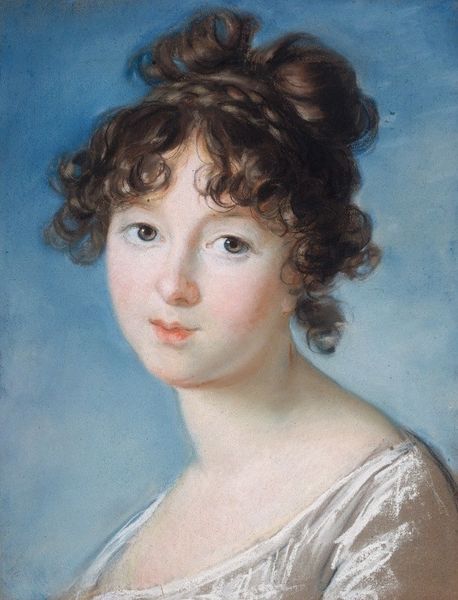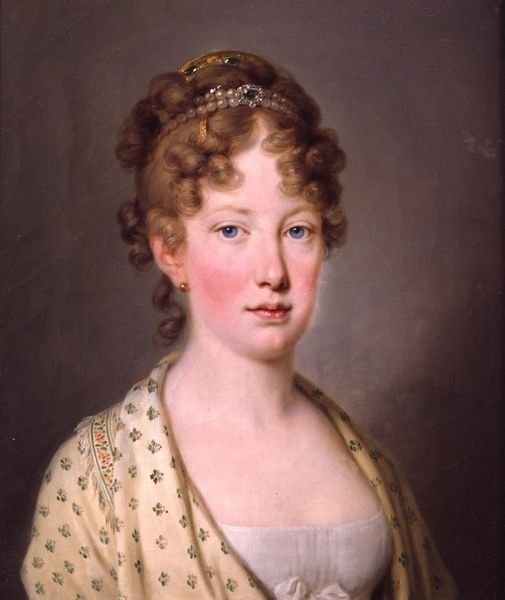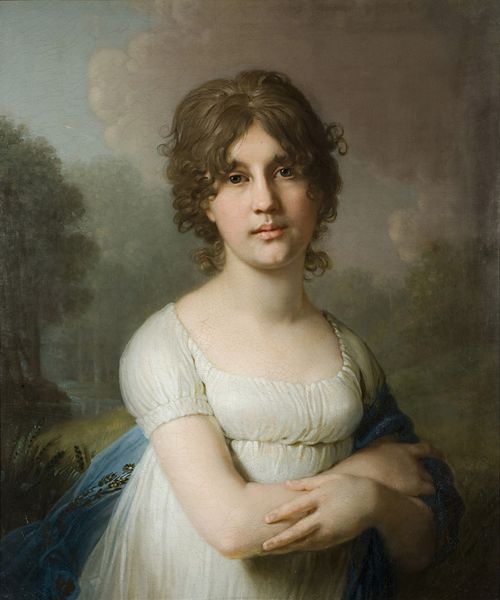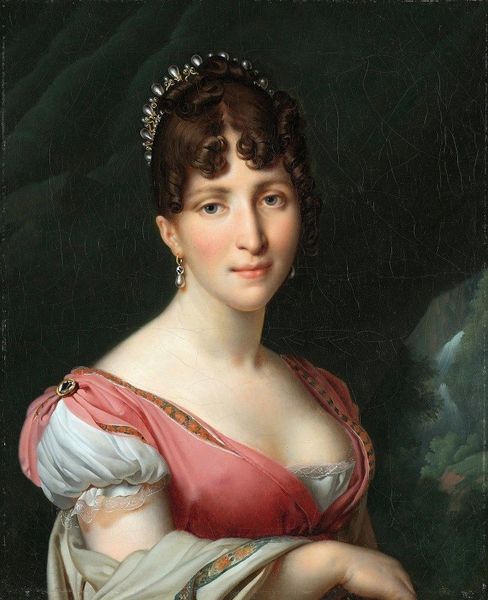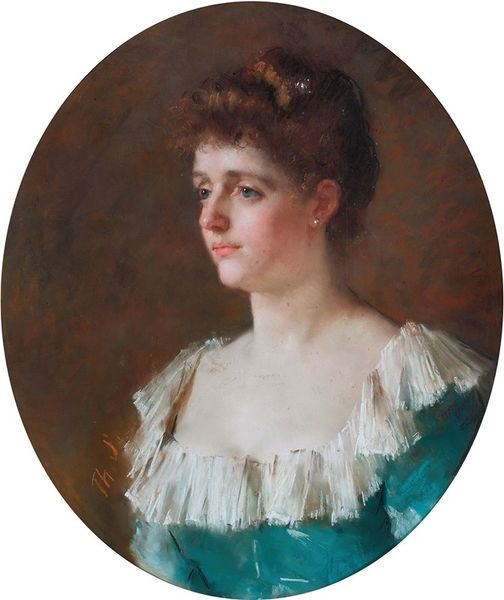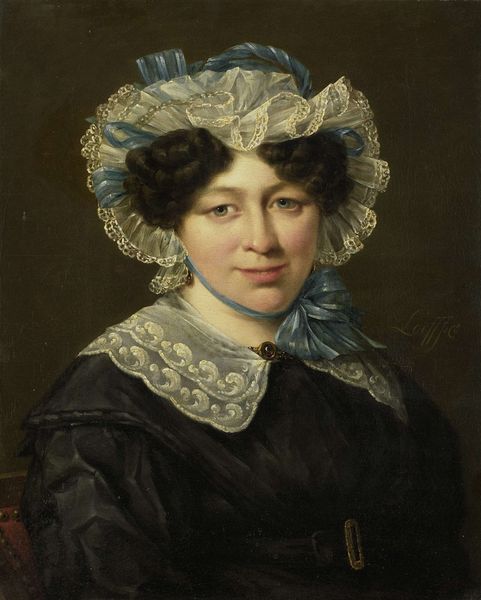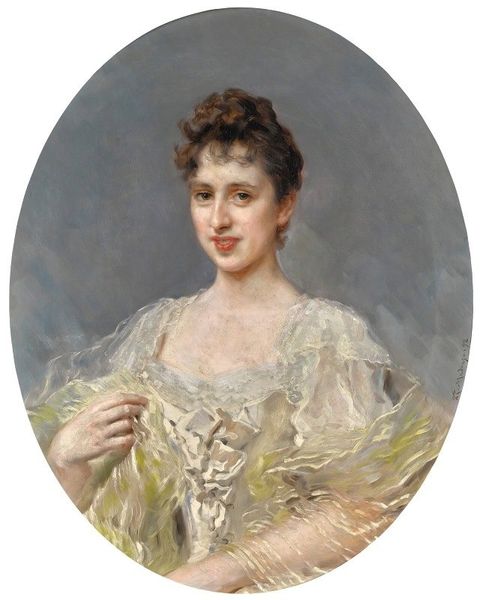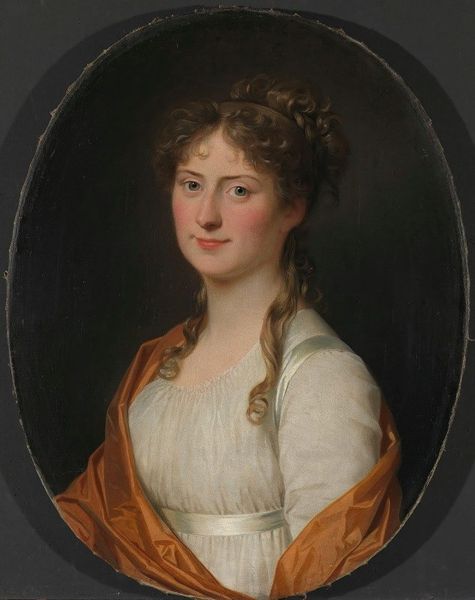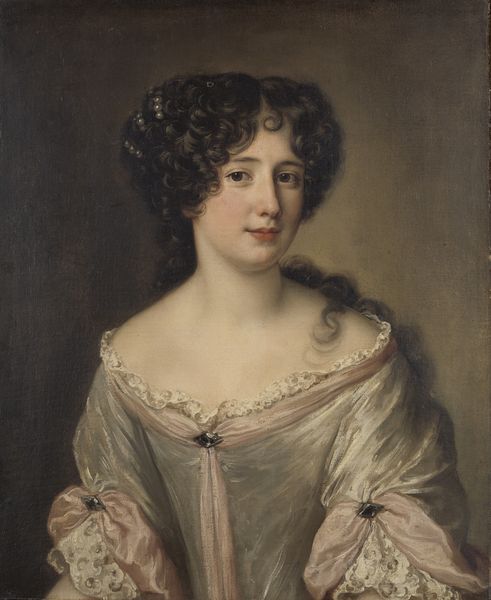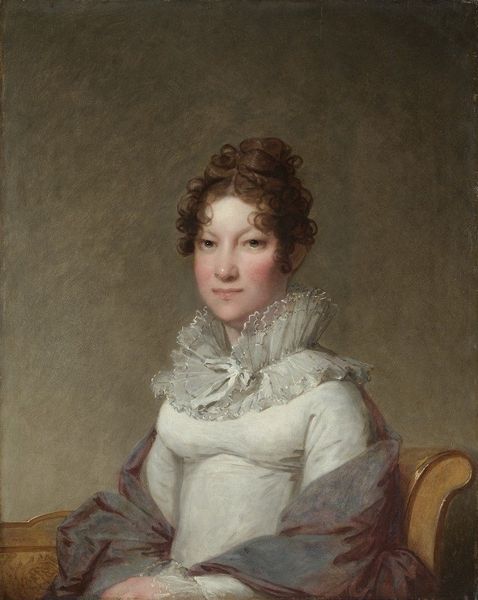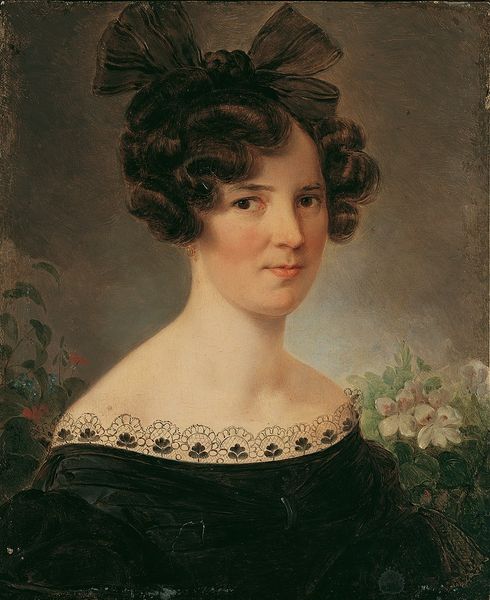
painting, pastel
#
portrait
#
figurative
#
painting
#
portrait reference
#
portrait head and shoulder
#
romanticism
#
animal portrait
#
animal drawing portrait
#
portrait drawing
#
genre-painting
#
pastel
#
facial portrait
#
portrait art
#
fine art portrait
#
celebrity portrait
#
digital portrait
Copyright: Public Domain: Artvee
Curator: The portrait before us is entitled "Portrait of Mrs. Spencer Perceval, Née Jane Wilson," and was created by Elisabeth Louise Vigée Le Brun. Editor: There’s something immediately intimate about this portrait, it almost feels like I am looking at a family member or a close acquaintance. The subtle rendering of the skin is masterfully done. Curator: Le Brun's portraits were popular among the European aristocracy. Considering her clientele, one could argue these portraits reinforced established class structures through their commissioning and display. She worked within very particular power dynamics of patronage. Editor: Absolutely, and in this pastel, one is confronted by its sheer materiality, the way those delicate strokes construct texture, capturing the lace trim, the sheen of her hair ornament. One wonders about the provenance of these luxury goods displayed so prominently! Curator: Indeed. And think about the setting of such a piece— these works were often displayed in private salons and galleries. They played a vital role in shaping the subject's public image and projecting a certain status. Consider the political implications too, as these visual representations were often strategically deployed. Editor: It's also impossible to overlook the performative aspect, right? The subject, Jane Wilson, wife of the future Prime Minister, embodies ideals of feminine beauty and grace expected of women of her status at the time. She becomes this symbol presented for a specific form of consumption. The very making of a pastel involves certain ingredients too – how did she access them? Who ground them? The hands and labor are not invisible, once you start asking those questions. Curator: Fascinating. And seeing it within an institutional setting changes it again, doesn't it? Our museum transforms it into a spectacle for broader audiences, taking it beyond that elite circle, even today. That contextual shift changes its reading yet again. Editor: Thinking about that, considering the work that has gone into making it available to us now— the framing, transport, handling… and, of course, ourselves, analyzing what we see. These actions actively change the reception. It goes beyond just the artistic intention! Curator: Precisely. Seeing it displayed now offers insights into the continuing influence of those established hierarchies and what we, as institutions, decide is worthy of display, study and care. Editor: It also becomes something of an archaeological dig, exposing processes and hidden labour in our current moment. Food for thought.
Comments
No comments
Be the first to comment and join the conversation on the ultimate creative platform.
